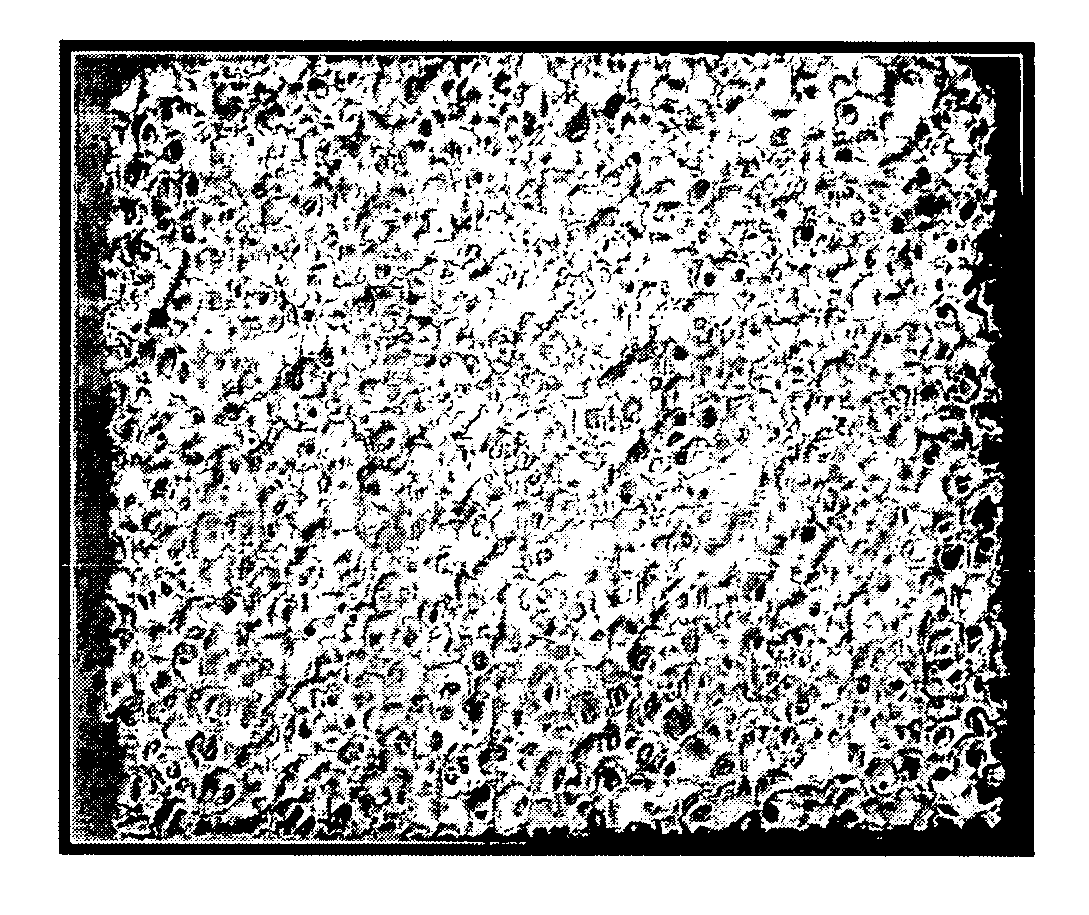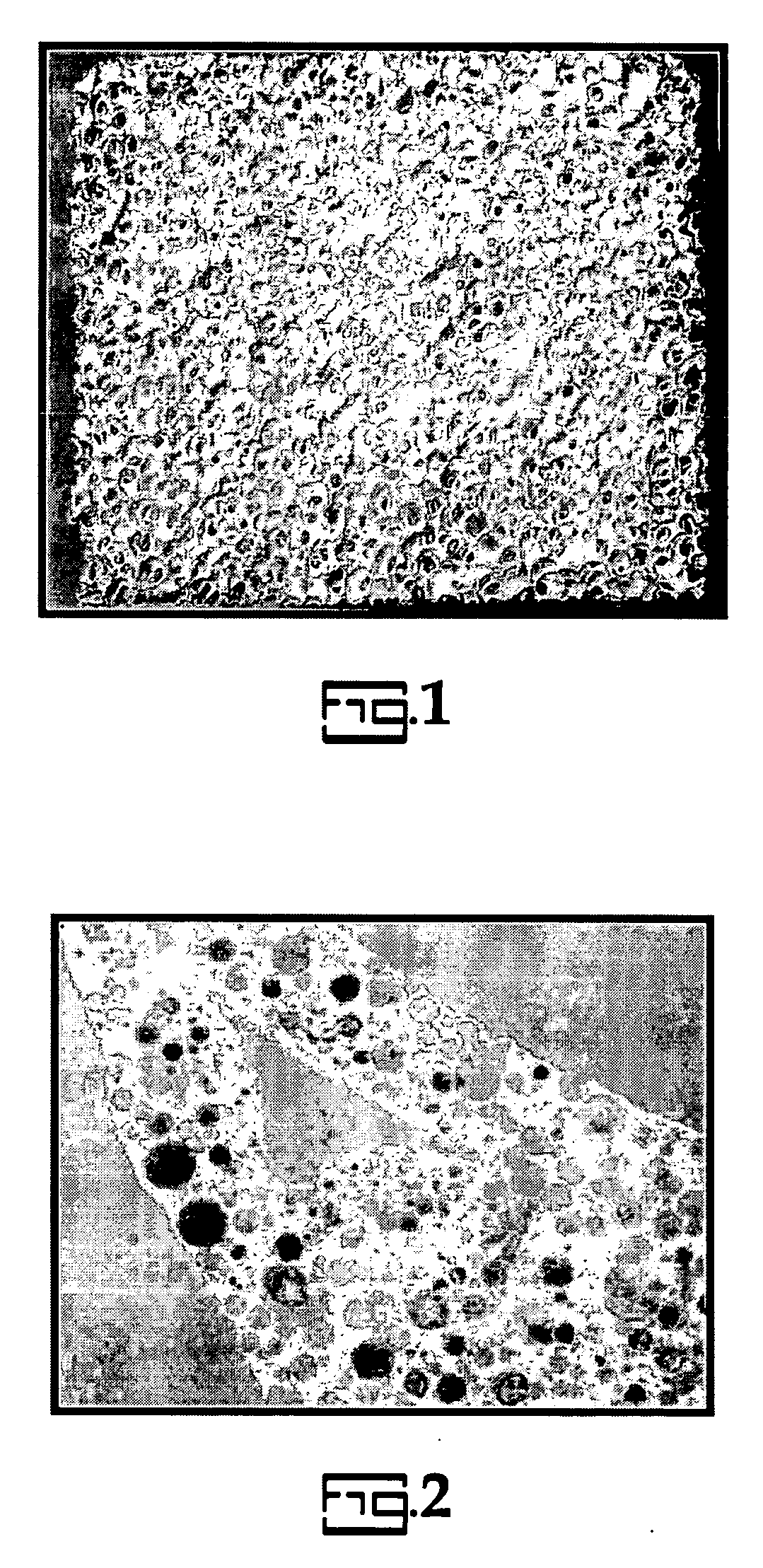Ceramic foam filter for better filtration of molten iron
a ceramic foam filter and ceramic foam technology, applied in the field of ceramic foam filter, can solve the problems of difficult slag retention in strainer-type filters, unavailable mullite foam filters for foundry applications, etc., and achieve the effect of cleaning and more machineable iron castings
- Summary
- Abstract
- Description
- Claims
- Application Information
AI Technical Summary
Benefits of technology
Problems solved by technology
Method used
Image
Examples
example 1
[0041] A ceramic precursor composition was prepared utilizing the materials listed in Table 1. In Table 1, the refractory aluminosilicate used was Mulcoa 60®, ground to a −325 mesh, as available from C-E Minerals. Colloidal silica was used as obtained from Nyacol. Modified bentonite was used as obtained from Wyo-Ben, Inc. Fumed silica was used as obtained from CE Minerals. The composition was fired at 1200° C. for 30 min. Fused silica could substitute for fumed silica to improve the ability to cut the ceramic foam in the fired state. The modulus of rupture was measured at ambient temperature as reported in Table 2. The modulus of rupture was measured at a high temperature as reported in Table 3.
TABLE 1ComponentWt %refractory aluminosilicate54.50colloidal silica21.00modified bentonite0.75Fumed silica17.75water6.00
[0042] The average room temperature modulus of rupture (MOR) of the filter is approximately 90-psi over the given density range. This value is acceptable for most molten m...
example 2
[0044] To improve liquid slag retention and capacity a composition was prepared as in Table 1 with the further inclusion of 4 wt % hollow organic spheres with a diameter of 80 μm. The resulting filter was examined under an electron microscope and the resulting microstructure is shown in FIG. 2. When the liquid slag wets the mullite body, it can be drawn into the micropores via capillary action.
example 3
[0045] A filter was prepared under the same conditions as Example 1 with the composition provided in Table 4. Mulcoa 70® was used as the refractory aluminosilicate as available from C-E Minerals.
TABLE 4ComponentWt %Refractory aluminosilicate54.5colloidal silica21.0modified bentonite0.8silica fume17.8water5.9
[0046] The resulting average hot MOR was measured to be 34 psi at an average foam relative density of 14%.
PUM
| Property | Measurement | Unit |
|---|---|---|
| Fraction | aaaaa | aaaaa |
| Fraction | aaaaa | aaaaa |
| Pressure | aaaaa | aaaaa |
Abstract
Description
Claims
Application Information
 Login to View More
Login to View More - R&D
- Intellectual Property
- Life Sciences
- Materials
- Tech Scout
- Unparalleled Data Quality
- Higher Quality Content
- 60% Fewer Hallucinations
Browse by: Latest US Patents, China's latest patents, Technical Efficacy Thesaurus, Application Domain, Technology Topic, Popular Technical Reports.
© 2025 PatSnap. All rights reserved.Legal|Privacy policy|Modern Slavery Act Transparency Statement|Sitemap|About US| Contact US: help@patsnap.com



